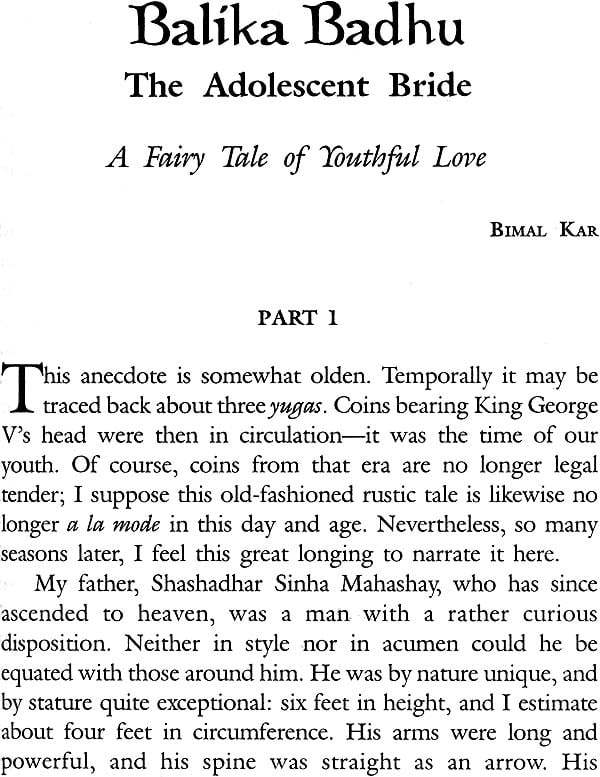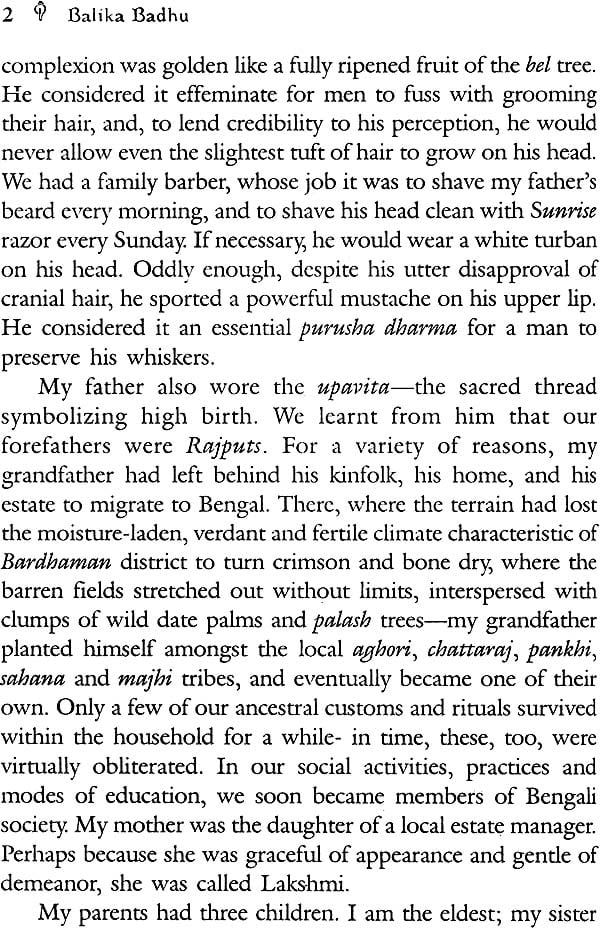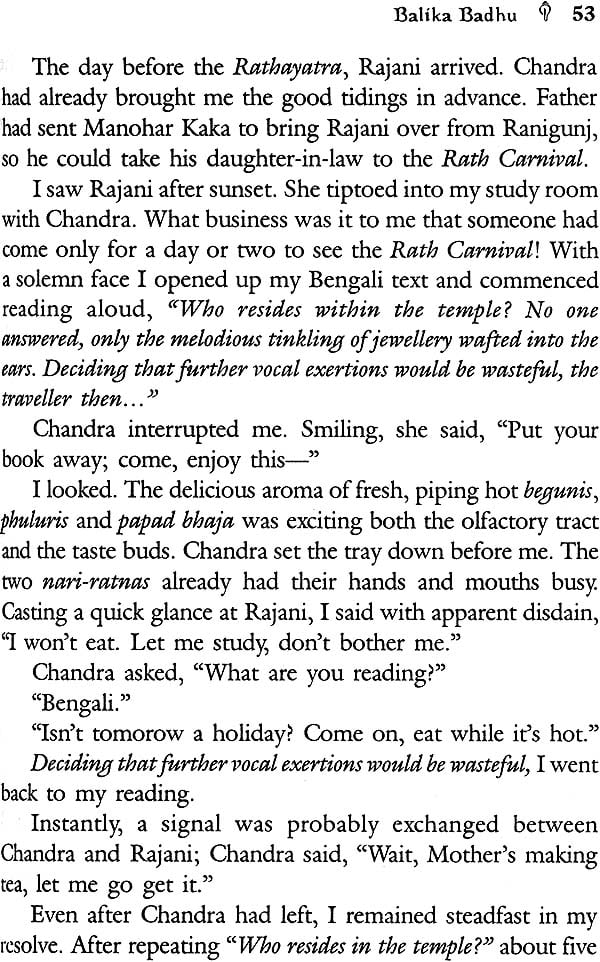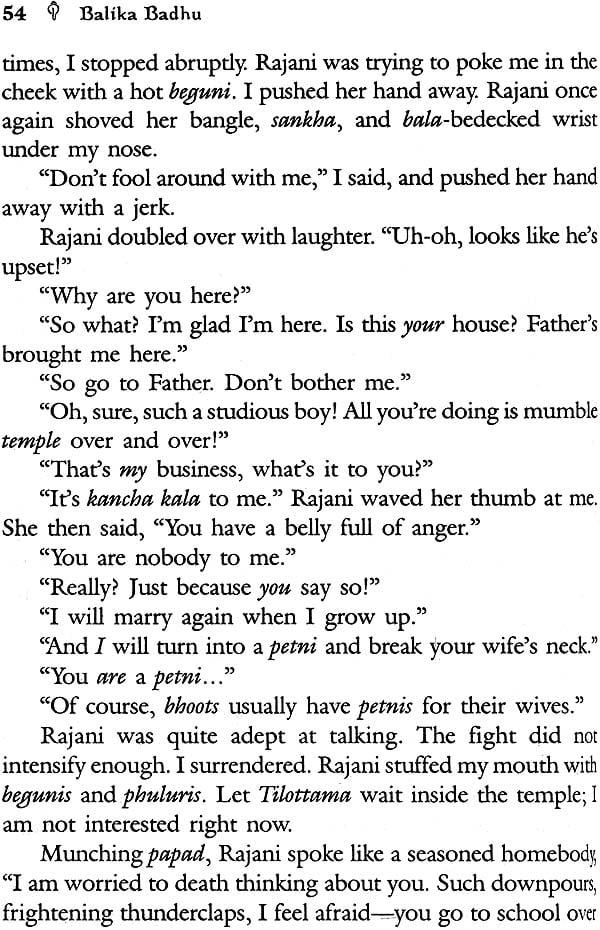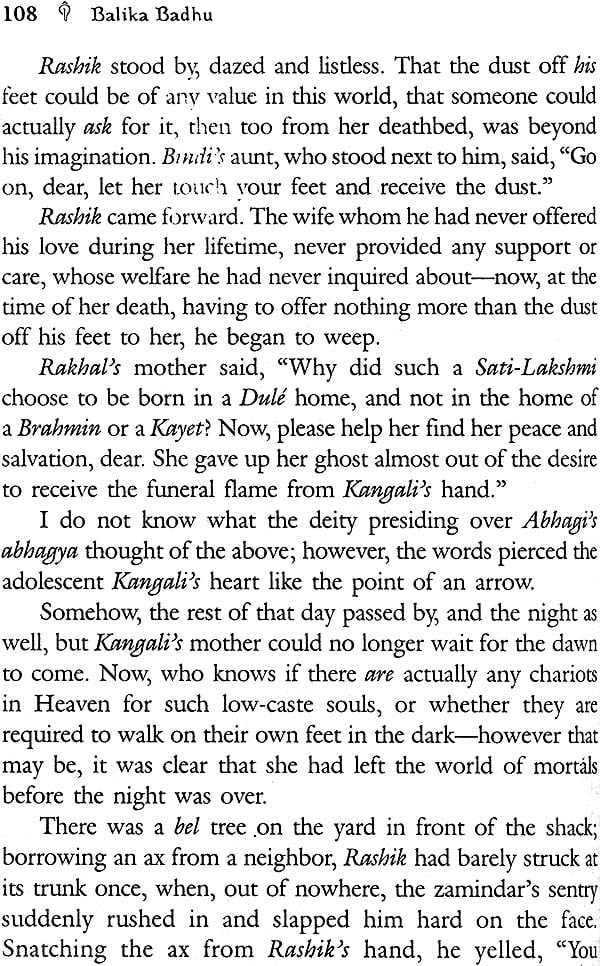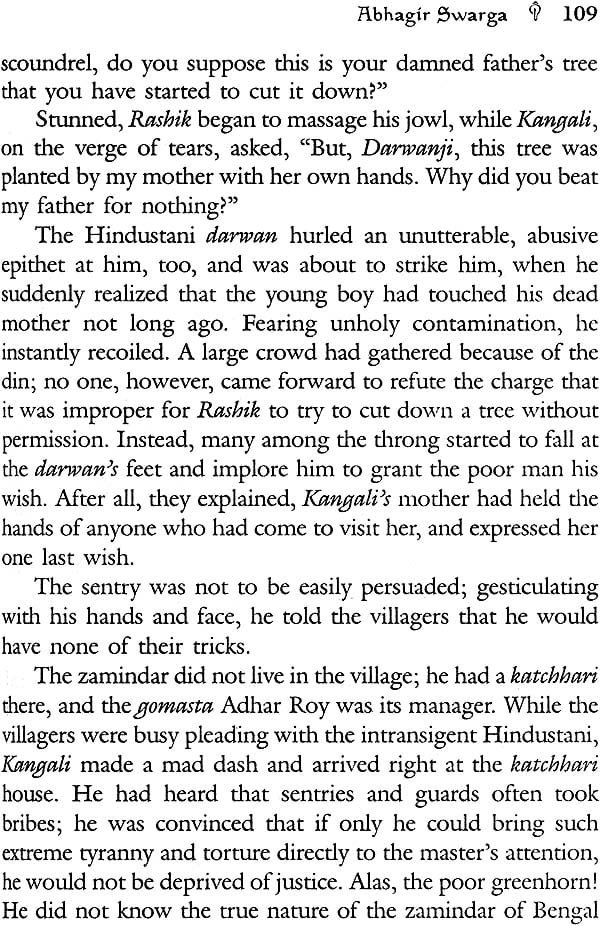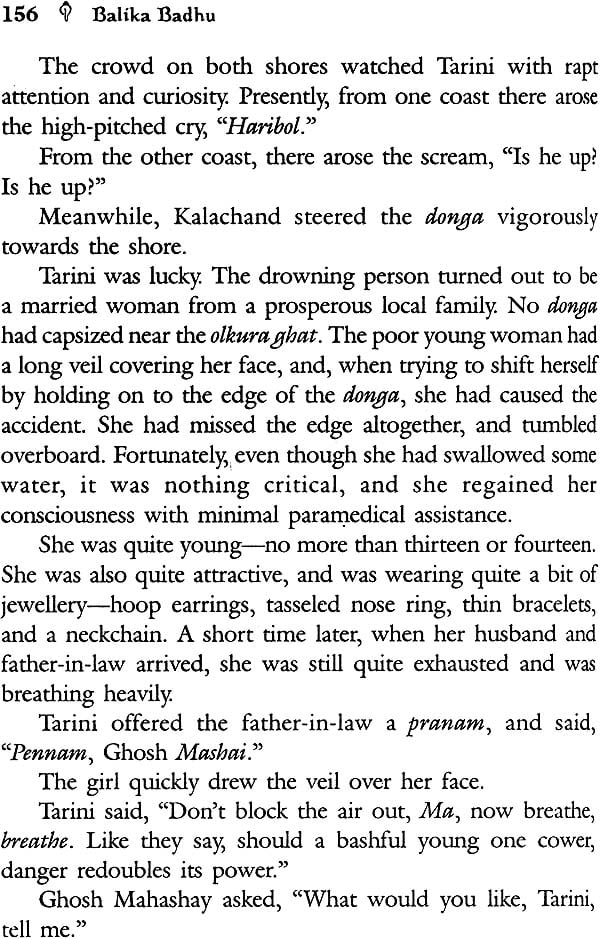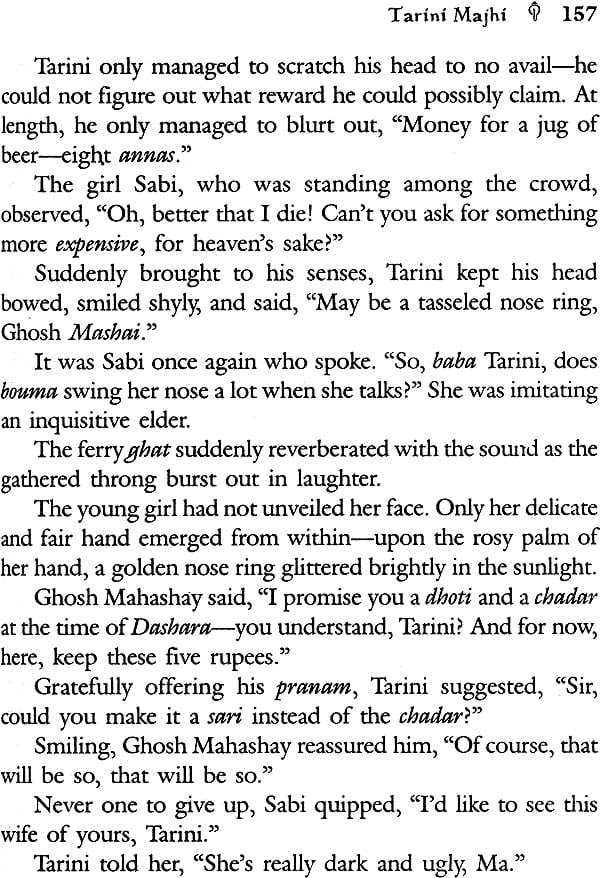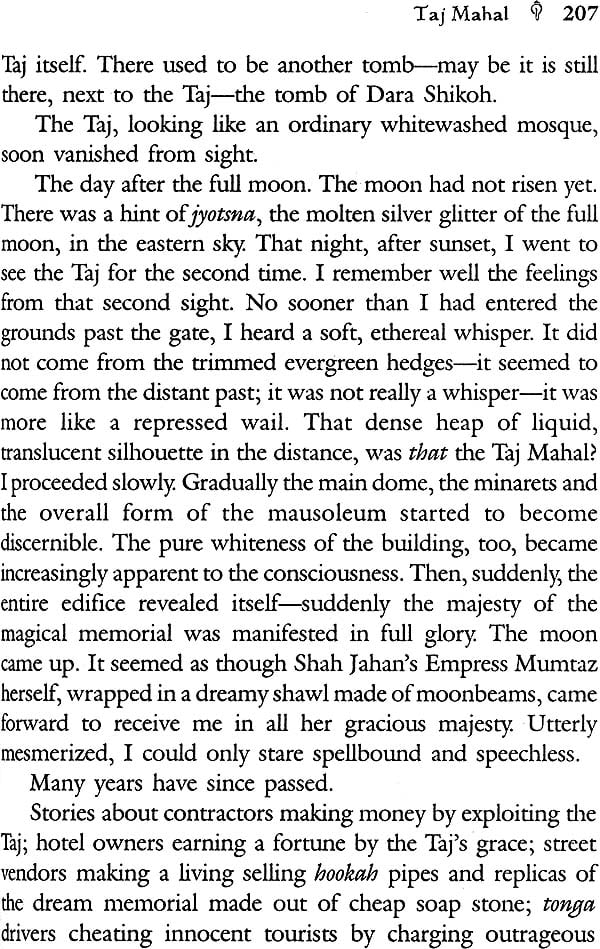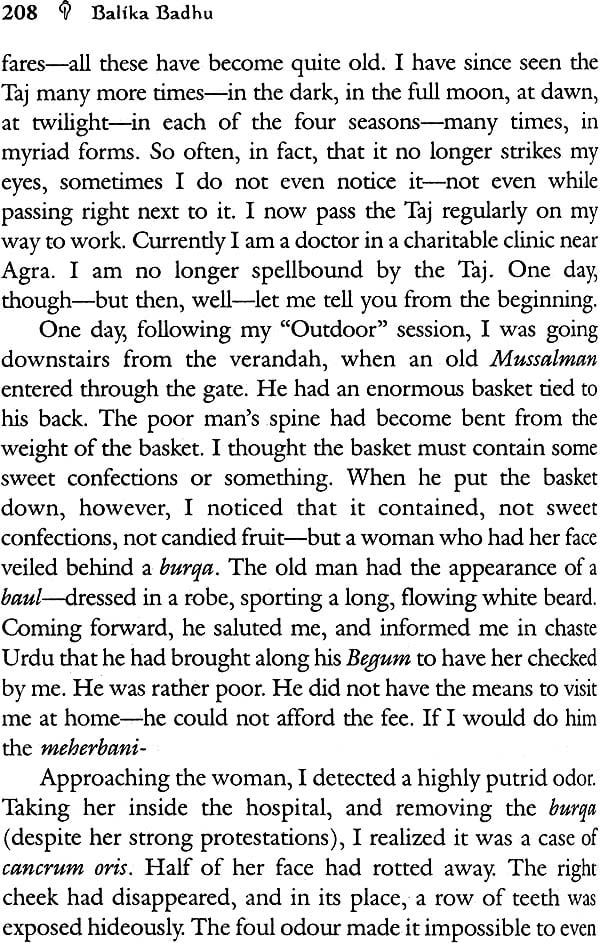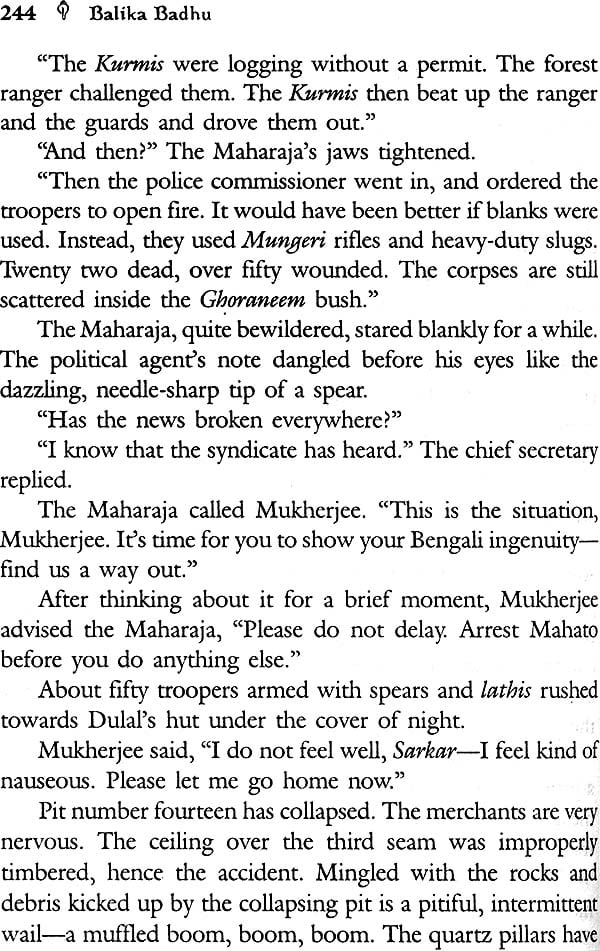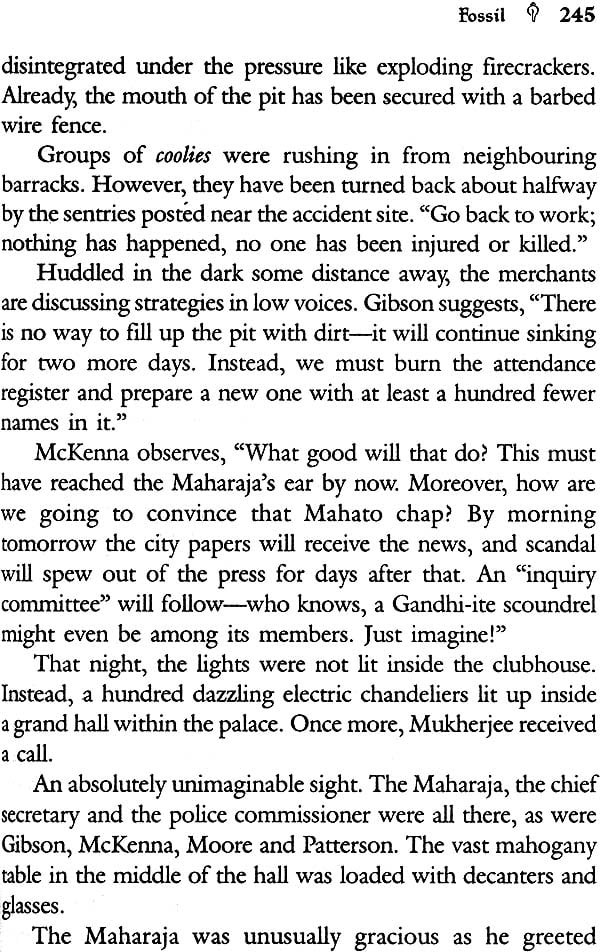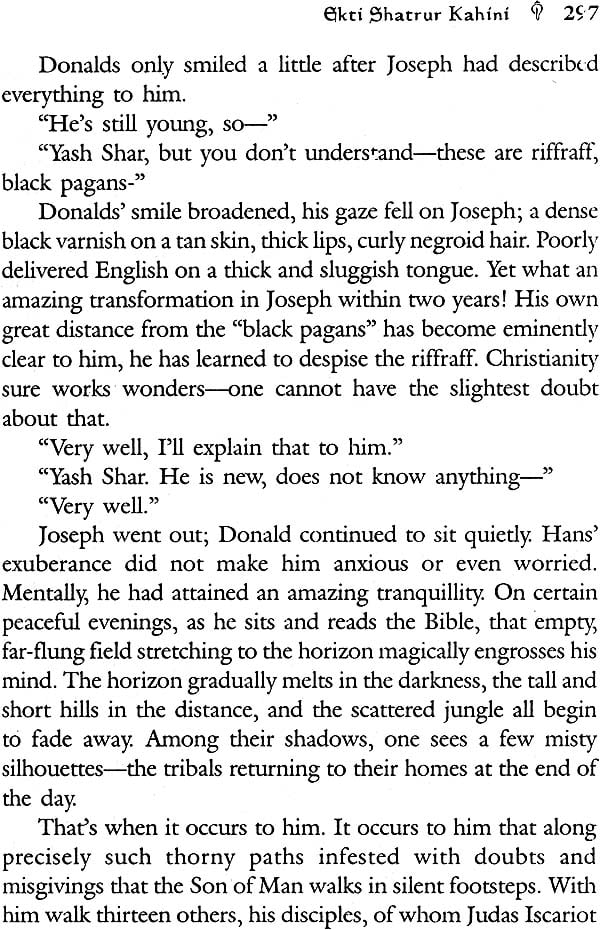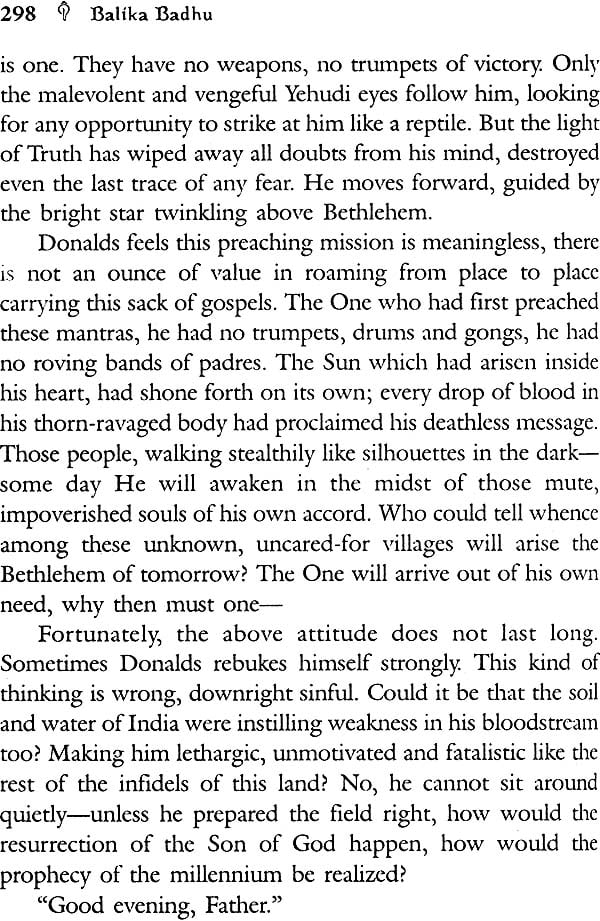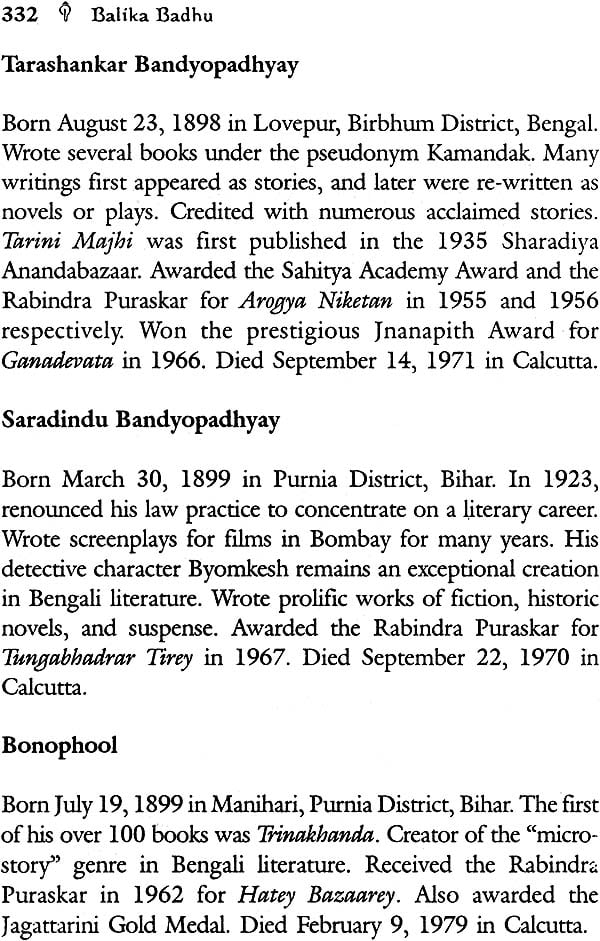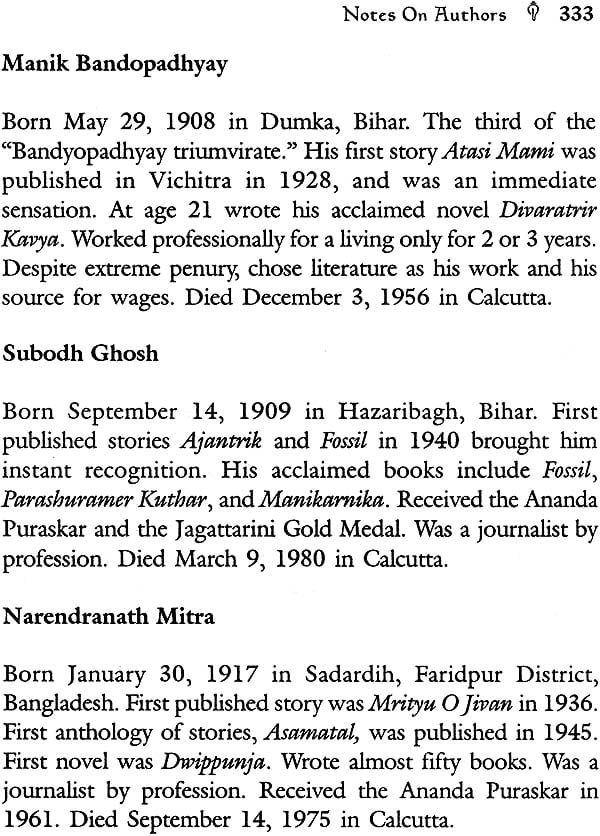
Balika Badhu (A Representative Anthology of Bengali Short Stories)
Book Specification
| Item Code: | NAJ892 |
| Author: | Monish Ranjan Chatterjee |
| Publisher: | Rupa Publication Pvt. Ltd. |
| Language: | English |
| Edition: | 2009 |
| ISBN: | 9788171676910 |
| Pages: | 337 |
| Cover: | Paperback |
| Other Details | 8.0 inch x 5.5 inch |
| Weight | 290 gm |
Book Description
This project, which began with the desire to render into English a rather long tale by Bimal Kar about five years ago, eventually grew into a considerably more extended compilation of Bengali short stories by ten of the most well- known practitioners of that art since the heyday of Rabindranath Tagore. The collection is limited in many ways, not the least of which being that no woman writer has been included, and that it contains only a baker's dozen stories (if we count Bonophool's micro-stories collectively as one)-a number pitifully small considering the vast and prolific field of authors and stories a translator has at his or her disposal. I have attempted to explain my rationale for my intent and selections in the introductory essay.
Since beginning this project, I have sustained a number of personal losses, and what makes the completion of it particularly poignant for me is that the individuals who have left my world were almost unanimously supportive of my feeble efforts at upholding Bengal's contributions to the literary and cultural heritage of the world. My work continues, and my only solace is that I had come to know these kind people with extraordinary wisdom and humility, and that they had extended to me a generosity and affection that exceeded by far my capacity to reciprocate or demonstrate my worthiness.
For their support and encouragement, I must sincerely thank my friend and colleague Nikolaos Bourbakis, and another friend and mentor, Arindam Purkayastha-two individuals with unlimited optimism and uncommon goodness of heart. A special note of thanks is also due to a dear friend, Sandeep Mitra, whose enthusiastic and well- reasoned commitment to preserving and enhancing the history and culture of India is only matched by his genuine interest in all aspects of human civilization.
Finally, let me close this prologue by expressing the hope that my young son and daughter, growing up in a place separated by continents from the land of their parents' birth, may develop an active interest in the history, aspirations and achievements of India and Bengal, and attempt to bring those far-flung outposts of high civilization closer to the rest of the world-a world increasingly interconnected by commerce and communication, yet still so far apart, at times, in spirit and goodwill.
Measured even by the standards of excellence achieved by Bengali literature in the past one hundred and fifty years, covering such diverse areas as poetry, fiction, drama, suspense, crime, belles-lettres, and historical and psychological novels, the short story as a literary genre stands apart in a class of its own. Several selected anthologies of short stories published in Bengali in the last two decades of the twentieth century emphasize two principal factors: firstly that the editors had to be virtually ruthless in limiting the collection, given the prodigious number of outstanding works in the pool from which the selections had to be made; and secondly that of all the components of Bengali literature, it is the short story which is truly and indisputably world-class. A two-volume anthology, entitled Swa-Nirbacbita Shreshtha Galpa (Self-Selected Best Short Stories), edited by renowned authors Bibhutibhushan Mukhopadhyay and Samaresh Basu, and published by Model Publishing House, Calcutta, in 1987, attempted to cover one hundred years (with author's birth years in the range 1861- 1960) of the short stories by bringing together a collection of, self-selected best short story contributed by each of one hundred and seventeen authors, including those widely acclaimed, as well as apparently less well-known. The anthology mentions that the selection was made with deference to the noble tradition of the Bengali short story, and to the creativity and variety represented by the collection. Another anthology, thematically compiled as the authors' first acclaimed stories (the title in Bengali was Pratham Shara Jagano Galpa), and edited by Ananda Bagchi, was published in 1989 by Pushpa Publishers, Calcutta. This anthology emphasizes the distinction between a self-selected best story collection, and a first acclaimed stories collection. While the former is picked out by the author alone, from the compendium of his or her works, reflecting individual taste or preference, the latter is based on viewing one's own work from the perspective of the wider readership, and fine, ''1g a resonance within one's own mind. While such a collection may well be regarded as being driven by popular acceptance, and therefore become subject to reservations with regards to its literary merit, the anthology goes on to claim that instant and spontaneous popularity does have a measure of lasting value.
A slightly different class of selected short stories in Bengali, developed out of a tradition of Sharadiya Special Issues (published annually during the autumn Durga Puja festival in Bengal) of Desh and other literary magazines for well over fifty years, links the development of experimental and creative writing in Bengali with the proliferation of news and literary magazines. These two components have clearly been mutually supportive, and consequently short stories published in literary magazines have, within only a few decades, been accorded the same admiration otherwise reserved for classic works published by elite publishing houses.
During the 1970s, the National Book Trust of India took up a plan to publish short stories written in the constitutionally recognized regional languages of India, along with their translations in the other languages. This initiative resulted in a collection entitled Ekushti Bangla Galpa (Twenty One Bengali Short Stories), edited by Arun Kumar Mukhopadhyay, Professor of Bengali Language and Literature, University of Calcutta, and published by the Trust in 1977. Professor Mukhopadhyay has provided an excellent overview of the different periods, classifications and evolution of the Bengali short story It turns out that the present collection of English translations, even if decidedly small in number and scope, docs however contain samples from each of the key periods discussed by Professor Mukhopadhyay: The introduction presented here will draw generously from Professor Mukhopadhyay's commentary.
While selected anthologies in Bengali based on the works of a number of authors distributed over a certain period have started to appear more regularly in the last twenty-five years, it turns out that the history of collected or selected short stories by individual authors goes back a great deal further. Several of Rabindranath Tagore's short-story collections were published in the years 1895, 1912, 1916 and 1941, and his illustrious Galpa Guchchha (A Bouquet of Stories), was published posthumously in four parts in 1964. Likewise, collections of stories by Sarat Chandra Chattopadhyay were published as early as 1916.
By contrast, and with greater significance in relation to the present effort, English translations of Bengali short stories, taken as a whole, have been virtually non-existent. The same could in all likelihood be said of other works of Bengali literature, especially those of the last fifty years; however, that matter is beyond the scope of this discussion. With the exception of Rabindranath Tagore, Bibhuti Bhushan Bandyopadhyay, and a handful of others, few authors from Bengal have had their works competently represented, if at all, in English. Tagore was already known in English literary circles as a master story-teller as early as 1912, thanks to the efforts of painter William Rothenstein, Modern Review editor Ramananda Chattopadhyay, and others. Moreover, following the world-wide interest generated by his Nobel Prize in 1913 (which was won as the first non-European in the world to be so honoured), his short-stories, as much as his other works, began to be translated sporadically in many languages. With Bibhuti Bhushan, part of the impetus, no doubt, was generated by the runaway critical success of the film Pather Panchali by India's greatest director, Satyajit Ray. Thereafter, some of his writings appeared in translation under the auspices of UNESCO in the 1950s and '60s. More recently, a collection of Bibhuti Bhushan's short stories, translated by Phyllis Granoff, was published as part of the UNESCO Indian Series by Mosaic Press, Ontario, Canada, in 1984. The collection included the story Puin Mancha, which (as translated by the translator of this volume) is also included in the present anthology. Other writers who have received some attention include Mahasweta Devi (thanks in large part to the efforts of Gayatri Chakravarty Spivak in the United States), Saryajir Ray; and, to a much smaller extent, Premendra Mitra. The overwhelming absence of the best works of the greatest names in the post-Tagorean Bengali literature in the English language would readily explain why writers of Indian origin, writing in English directly, appear so much more successful in the international arena, and reach a much wider audience, compared with those writing in the regional vernacular within India. This leads us directly into the debate spurred by Salman Rushdie's famous (or infamous, depending on one's perspective) 1995 assertion that "the best Indian writing in the past fifty years has been in English. JJ We shall return to this matter a little later.
According to Professor Mukhopadhyay, the first truly successful writer of the Bengali short story was, of course, Rabindranath Tagore. In his magical hands, the short story received its breath of life, and prospered in astonishing ways. His genius touched virtually every facet of the short story: romance, nature, social ills, philosophy, poetic subtlety, history, and humour. He made forays into each realm at will, and wrote almost uninterrupted for close to fifty years between 1890 through 1940.
Approximately contemporaneous with Tagore, we find Trailokyanath Mukhopadhyay, Prabhat Kumar Mukhopadhyay, Pramatha Choudhuri (who also wrote under the pseudonym Birbal), and, of course, the writer perhaps second only to Tagore in the areas of the psychological novel and the short story, Sarat Chandra Chattopadhyay (who also occasionally wrote under the pseudonyms Anupama Devi and Anila Devi). These gifted authors enriched the storehouse of Bengali short stories with a rich and varied harvest.
| Translator's Preface | ix |
| Introduction | xi |
| Balika Badhu | 1 |
| Abhagir Swarga | 97 |
| Mahesh | 114 |
| Puin Mancha | 132 |
| Trini Mancha | 152 |
| Dehantar | 174 |
| Chokha Gyalo | 193 |
| Parul Prasanga | 195 |
| Ek Phonta Jal | 197 |
| Sarthakata | 199 |
| Naudi O Taalgaachh | 201 |
| Pukure | 203 |
| Taj Mahal | 206 |
| Level Crossing | 211 |
| Fossil | 228 |
| Ajantrik | 248 |
| Ras | 258 |
| Ekti Shatrur Kahini | 288 |
| Glossary | 313 |
| Biographical Notes on Authors | 331 |
